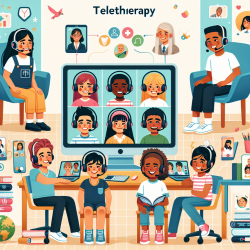Introduction
In the realm of speech-language pathology, understanding the broader environmental factors affecting children's health is crucial. A recent study titled Reshuffling and Relocating: The Gendered and Income-Related Differential Effects of Restricting Smoking Locations offers insights that can enhance the outcomes of our therapy sessions. This research highlights the unintended consequences of secondhand smoke (SHS) policies, particularly how they affect different genders and income groups. By integrating these findings into our practice, we can create more effective and comprehensive strategies for our young clients.
Understanding the Impact of SHS Policies
The study conducted by Hemsing et al. (2012) explores how smoking restrictions influence the social and physical environments of individuals. It reveals that these policies often lead to a reshuffling of smoking locations, which can inadvertently increase SHS exposure in private spaces such as homes and cars. This is particularly concerning for children, who are more vulnerable to the harmful effects of SHS.
Gender and Income Disparities
One of the key findings of the study is the differential impact of SHS policies on men and women, as well as across different income levels. Women, especially those in low-income groups, face unique challenges in managing SHS exposure, often due to power dynamics in the home. Men, on the other hand, might encounter more SHS exposure in workplaces. These insights are crucial for practitioners working with children from diverse backgrounds, as they highlight the need for tailored interventions that consider these socio-economic and gender-specific challenges.
Implementing Research Findings in Practice
As practitioners, we can leverage these findings to enhance our therapy outcomes by:
- Advocating for smoke-free environments in homes and schools, emphasizing the importance of reducing SHS exposure for children's health and development.
- Educating families about the risks of SHS and providing resources for smoking cessation, particularly targeting low-income households where smoking may be more prevalent.
- Incorporating discussions about SHS exposure into our assessments and therapy plans, ensuring that we address all environmental factors that could impact a child's progress.
Encouraging Further Research
While this study provides valuable insights, it also underscores the need for further research into the nuanced effects of SHS policies. Practitioners are encouraged to engage in research initiatives that explore these dynamics further, particularly focusing on interventions that can mitigate the negative impacts of SHS on children.
Conclusion
By integrating the findings from the study Reshuffling and Relocating: The Gendered and Income-Related Differential Effects of Restricting Smoking Locations into our practice, we can better support the health and development of the children we serve. Our role as speech-language pathologists extends beyond therapy sessions; it involves advocating for healthier environments that foster positive outcomes for all children.
To read the original research paper, please follow this link: Reshuffling and Relocating: The Gendered and Income-Related Differential Effects of Restricting Smoking Locations.










